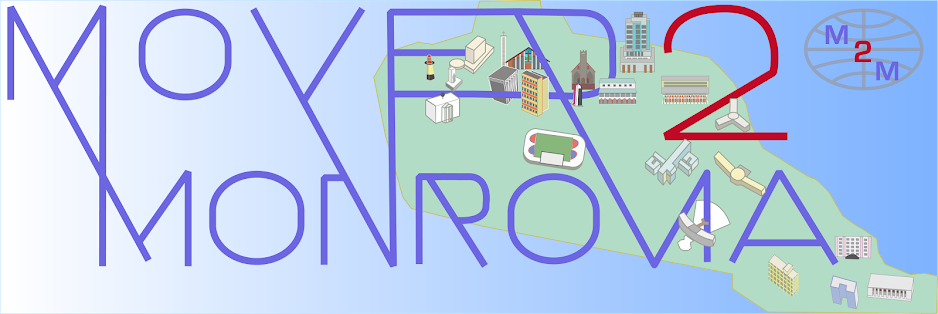The book A Land and Life Remembered, which has been discussed extensively in the last two posts, focuses mainly on the original settler townships in Grand Bassa County (Hartford, Fortsville, and Edina) and the St. Paul River area (White Plains, Millsburg, Clay-Ashland, Crozierville, and Arthington). Monrovia is mentioned only in passing, despite having probably the largest stock of historic architecture in the country.
As mentioned previously, the field trips were taken between 1977 and 1986, and in the best of circumstances it would be reasonable to expect some of the structures featured would be lost, as many of them had nearly collapsed a quarter century ago, and there no historical preservation restrictions even today. This is quite aside from the merciless effects of the war, through outright destruction or decades of neglect and abandonment in the merciless West African climate.
In my last post, I put up some pictures of Robertsport and Buchanan, with some existing houses built in the historical style, even if its unclear as to how historical the houses are themselves. The book does its best to provide information on the name of the family that owns the house, and approximates the date of the house's construction (although extensive remodeling makes this date a bit meaningless).
When it comes to Monrovia, however, a more specific street address would be useful. Arthington and Edina may be nothing more than a cluster of farmsteads, but Monrovia's many streets, as well as the extensive development and destruction of the last three decades, would make more location information helpful.
 The book doesn't specify the exact location of the above house, but I don't really need to ask. I am pretty positive that this is the same building, on Front Street where it crosses Randall Street at an overpass:
The book doesn't specify the exact location of the above house, but I don't really need to ask. I am pretty positive that this is the same building, on Front Street where it crosses Randall Street at an overpass: 
I apologize for not having a better picture of the structure (one of those times when you assume you have a picture of something you've admired a thousand times, but when you go to find it, you realize you looked at it so much you never bothered to photograph it). The pitch of the roof and the two windows on the top floor are unmistakable; looks like something happened to the front porch. If that didn't give it away, Belcher's photograph shows the beginning of the underpass in the foreground.
Elsewhere in the book's plates is this double feature:
 Not too sure about the Parker House, but I am absolutely sure that the Coleman house is on Coleman Hill, at the intersection of Front and Gurley Streets. The first time I encountered it, the weaping, creaking structure still had a waistcoat of gorgeous clay brick and a surprising amount of woodwork on the mansard windows:
Not too sure about the Parker House, but I am absolutely sure that the Coleman house is on Coleman Hill, at the intersection of Front and Gurley Streets. The first time I encountered it, the weaping, creaking structure still had a waistcoat of gorgeous clay brick and a surprising amount of woodwork on the mansard windows:
This is the same house that I was distraught to suddenly discover raised to a pile of rubble at the beginning of 2010:

A travesty. I call this Monrovia's Penn Station. I asked someone about the house the day that I walked past the rubble and took these rather silly, forlorn shots of the heap of brick. they said it would be a better thing to have a new house there. So much for history.



No comments:
Post a Comment